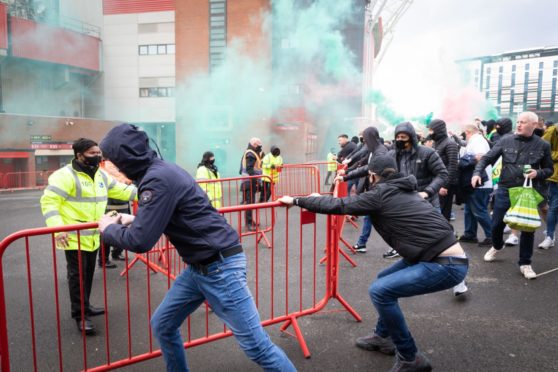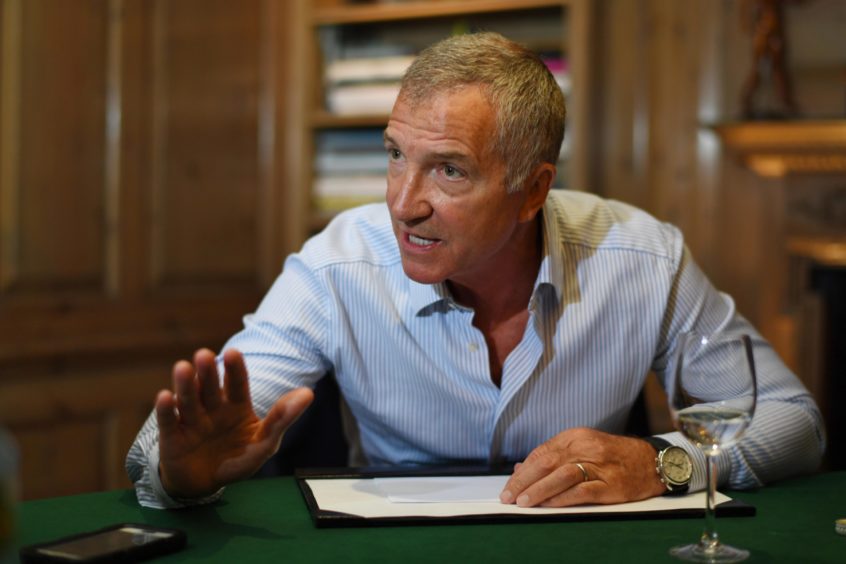
It is the burden of successive generations to be told things were tougher back in the good old days.
To have their elders place the rose-tinted specs, reserved for reviewing years gone by, off to one side as they point up the privations of the past.
Memes on social media poke fun at the habit, with comments about having to walk miles to school every day scrawled across photographs of overladen Sherpas scaling Mount Everest and the like.
Of course, football has its very own time-capsule clichés.
Think of jumpers-for-goalposts, uncovered terracing, crush barriers hemming in heaving crowds, and fans transported around the country in cattle trucks disguised as railway carriages, laughably rebranded as “British Rail Specials”.
Today’s supporters, with their all-seated, modern stadiums and wall-to-wall coverage of games on satellite channels, do not know they are born.
Or so the logic goes.
Anyone who has come through the past 14 months, though, should be able to trump all such talk.
In football, as in life, the coronavirus pandemic has changed everything. Now, health concerns are absolutely the priority.
Backers of teams across the country will look back on the end of the 2019-20 season, and the entire 2020-21 campaign, as a time when they were forced to embrace “the new normal” – and found it to be anything but.
In years to come, hundreds of thousands will be able to talk of shelling out for season tickets, yet never once getting in to see their team play in the flesh.
Some of the media get that privilege inside socially-distanced press boxes, but it is not much fun.
Watching one game from inside an empty ground is a novelty. Thereafter it is a soulless experience.
This will be remembered as a time when leagues were called prematurely, making champions of some, and relegating others. Cup Finals were thrown forward months, and young players broke through before silent stands.
Recapturing the sheer unpredictability of Covid-19 times will be a stretch for those looking back.
How, to use last Sunday as an example, you could sit down, looking forward to watching Manchester United take on Liverpool – only to discover the game had been postponed.
Not due to players failing Covid-19 tests, which did account for a clutch of matches as the first wave of the virus approached its peak.
But, more shockingly, because fans had stormed the Old Trafford pitch to protest against United owners, the Glazers.
The uprising among the faithful – some more in touch with the politics than those intent on having a day out and causing mayhem – apparently caught the authorities cold.
There were ugly scenes, with a police officer requiring emergency treatment, and flares thrown towards the Sky Sports pundits as they sat in their studio inside the ground.
Graeme Souness’ assertion that the reckless act could have badly maimed, or even killed, one of them was an accurate analysis from one of the sharpest pundits in the business.
The Glazers had been targeted for their part in championing the European Super League plans, which had included a dirty half-dozen of England’s biggest clubs, alongside the same number again split between the powerhouses of Spain and Italy.
Hated and ill-fated in equal measure, the talks were a direct result of the coronavirus.
A study by market analysts, KPMG, revealed that 20 of Europe’s biggest clubs had lost more than a billion Euros over the past year in revenue, a shortfall that has left the very biggest clubs twitchy in the extreme.
The protests themselves – peaceful until an Old Trafford door that been sprung allowed the hordes to swarm inside the ground – are also defined by the prevailing regulations.
Would the “Neil Lennon Must Go” outcry – that led to disturbing scenes outside Celtic Park after the shock League Cup defeat by Ross County – have been anything like as unruly had those involved been inside the stadium, and under normal stewarding?
Similarly, had Rangers won the title under normal circumstances, would there have been the lockdown-breaching scenes witnessed in Glasgow’s George Square as the Light Blues legions celebrated Steven Gerrard’s first title win and the KO’ing of Celtic’s 10?
In each case, the answer is almost certainly no.
In non-coronavirus times, clubs, police and stewards can harness the lessons of the past to control crowd behaviour.
Anyone, for example, throwing missiles or pyrotechnics can be quickly identified and punished.
There are many reasons for wanting fans back inside football stadiums.
Without them, the game is a pie without a filling – appetising to look at, but not what anybody signed up for.
The return of safer crowd control might not improve the product on the pitch, and age-old frustrations will follow in tandem.
But it is, nevertheless, something to look forward to.

Enjoy the convenience of having The Sunday Post delivered as a digital ePaper straight to your smartphone, tablet or computer.
Subscribe for only £5.49 a month and enjoy all the benefits of the printed paper as a digital replica.
Subscribe © Andy Hooper/ANL/Shutterstock
© Andy Hooper/ANL/Shutterstock